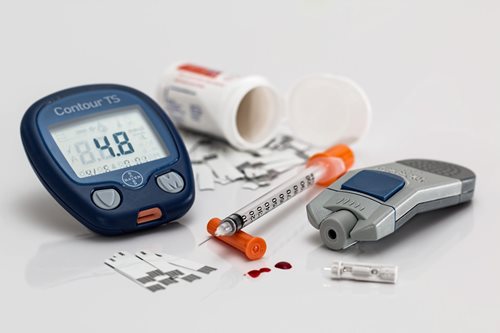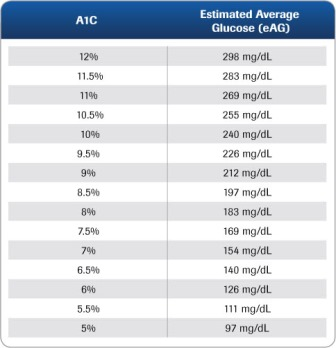
A while back I wrote in "Walk It Off" about my battle with a blood clot in my leg and how it was during my hospital stay that I was informed I was Diabetic. A nurse simply came into my room as I was ordering my food for the day, plopped a bunch of paperwork on my little table and said matter of factly, "Let's talk about your diabetes". Wait...What?!
She could tell I was caught off guard and immediately asked if I knew I was suffering from Type 2 Diabetes. Still in a state of disbelief, I said "No" but in the back of my mind, I wasn't really surprised at all. Almost everyone in my family has it, and since it is hereditary it really shouldn't have surprised me. It still scared me a little. I had heard horror stories about it. My Aunt Carolyn lost a leg because of Diabetes. I knew things were about to change, and I didn't know how. Through follow up doctor appointments and my own research I learned that not only can you control Type 2 Diabetes through medication, exercise and diet, but you can also possibly get rid of it.
It's Not as Scary as I Thought
There are basically 2 different types of Diabetes. Those with Type 1 Diabetes don't produce enough insulin to process the sugars in the bloodstream. In fact, they may not produce any insulin at all. These individuals need insulin shots to regulate their Blood Sugar levels and will always have this disease. It is manageable, but it requires constant vigilance and monitoring.
With Type 2, your body still produces its own insulin but doesn't process it properly or efficiently enough to lower your blood sugar levels. Your doctor can prescribe medication to bring these levels down, but medicine alone won't necessarily bring them down enough. Diet is a big part of the plan of attack, and one that I struggle with daily.
Potatoes, bread, pasta as well as anything with sugar will raise your blood sugar levels. Of course, these are all things I love and struggle to avoid, and many times I fail. Veggies, meat, and non-sugary drinks are better for you and will help keep your levels down. As a professional Driver, we know how hard these things are to find out on the road sometimes. Truck stops and fast-food restaurants are getting better about providing healthy options though. You just have to look.
Making Good Decisions
I'm not a doctor, nor do I play one on Facebook or Twitter, so consult your doctor before making any drastic dietary changes. There are a ton of resources out there to help us understand what we are dealing with. WWW.CDC.Gov is a great place to start. It explains symptoms, dietary recommendations and provides a great deal of information about both Type 1 and Type 2 Diabetes. The biggest decisions, in my opinion, are dietary. I won't tell you what you should or should not eat, your doctor or a dietician is better suited for that. Grabbing water instead of that Dr. Pepper or Mountain Dew that is screaming your name is a good start. A tough start, but still a good one. Maybe a smaller serving of mashed potatoes (I can't believe I just typed that!), or whole-grain bread. Little changes can make a big difference.
So here are a few facts and things we can do
- Go see your Doctor: It is estimated that 100 million people have diabetes or are pre-diabetic in the United States. It is also reported that 50% more truck drivers have Diabetes than the general populace because of inactivity and poor diet.
- Monitoring is Key: If you are type 1 diabetic, you already know this. Type 2 diabetics should also monitor their blood sugar levels daily. This can let you know what foods you react worse to, and which ones don't have as much effect. Everyone is different, so knowing this information is important.
- There are groups that help: I am part of a Facebook group called OTR Drivers Living with Diabetes It is a small group, but I am sure they would welcome more. I am not affiliated with it, other than being a member.
- If you are Diabetic, make sure you have an A1C test done within 3 months before your Medical Certification is due: This is a must. If you don't have it, they can refuse to give you a medical card.
- The chart included shows A1C levels and the associated average. A1C is a 3 month average of your Blood Sugar Levels. The normal range is 4-5.6%. 5.7 to 6.4% means you are susceptible to becoming diabetic. This is also referred to as being Pre-Diabetic. Anything over 6.5 means you have Diabetes. You must be less than 10% to get your Medical Certificate. Monitoring your Blood Sugar daily will give you a good idea where your A1C is sitting. As of November 19th, Type 1 Diabetics no longer need an exemption to drive a commercial vehicle, but there are procedures to follow. Go to WWW.FMCSA.DOT.gov for the latest requirements. (Chart Courtesy of INPodiatrygroup.com)
